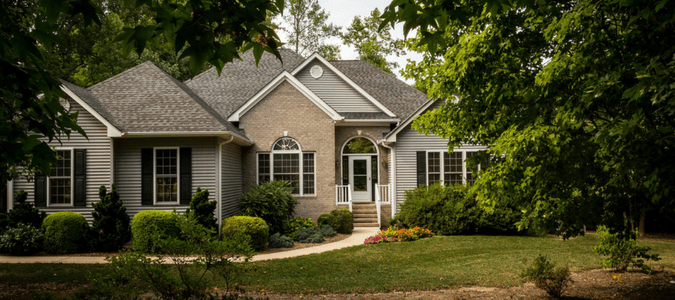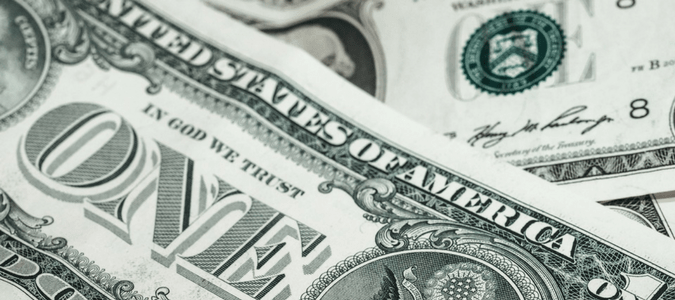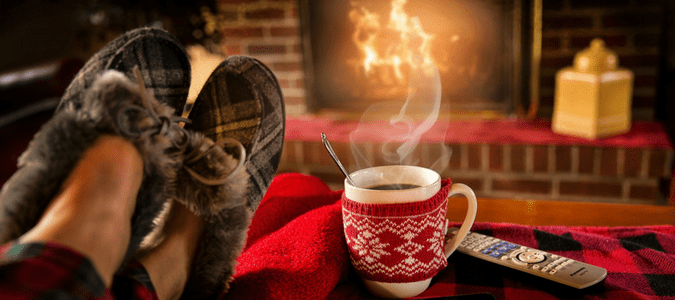
Remembering to change your furnace filter can be a tall order since it isn’t something you see or notice. The adage “out of sight, out of mind” seems well-suited for this routine task.
But clogged furnace air filters can spell big problems not only for your electric bill but for your furnace itself.
We know what you might be thinking. “What? There’s another filter in my home?”
Well, it depends. Here in Texas, the filter that’s working during the winter months is typically just your air duct return air filter, the same one you regularly change for your air conditioner. What you might not realize is that it is just as important to change this filter when you turn on the heater in your home as during the summer months.
In colder parts of the country, some homes may have a warm air furnace. In these units, a dedicated furnace filter is typically located in the blower compartment. If you have a boiler and radiators, then you probably don’t have an air filter for the furnace.
In this post, we’ll discuss why changing your filter is critical to maintaining your home’s heating and air conditioning system, the problems caused by clogged air filters, signs that might indicate that you have a dirty air filter and when and how you should change out your filters.

Clogged Air Filter: Air Conditioner and Heater Problems Start Here
Most HVAC systems use a forced-air system, which heats and cools air that is blown through the ducts in your home. The air is pushed into your rooms while the existing room air is pulled through a separate set of return ducts thus circulating the air in your home while warming or cooling it as needed.
Air filters play an important role in helping your system keep your home at the temperature you prefer. This component sits in those return air ducts and traps dust, dirt, pollen and other airborne particles from moving through your system, which helps it to operate more efficiently by keeping unwanted materials out of your HVAC system. Filters also helps to keep the air inside your home healthier by trapping allergens and preventing them from moving from room to room.
Filters are designed to be either cleaned or replaced when a certain amount of dirt, dust and other debris accumulate in either the pleats or the mesh, depending on what type of filter you choose. If you do not clean or change out your filter, it becomes clogged, thereby reducing airflow through your HVAC system. Without taking action, homeowners can experience a number of unwanted and preventable problems.
A few warning signs that you might have a dirty filter include:
- If you hear your furnace kicking on and off quickly, this can be a symptom of a clogged furnace filter. The clogged air filter prevents air from moving through the unit, which can make the heat exchange overheat and prevent your home from heating properly. If this situation is allowed to continue, the electronic “limit switch” safeguard can fail and then the furnace won’t come on to heat your home. You will literally be left out in the cold.
- Increased energy bills. As your furnace struggles to move air through your filter, which may be coated with an accumulation of debris, it requires more electricity and increases your costs. According to the U.S. Department of Energy, homeowners can decrease their overall energy use by 5 to 15 percent by performing the simple act of changing out your filters on a regular basis.
- If your evaporator coil freezes during the summer. This symptom is similar to what happens in the winter when your furnace kicks on and off. If your system isn’t able to move enough air, condensation can collect on the evaporator coil, causing it components to freeze up.
For these reasons, this simple step of changing out your air filter as a part of your regular home maintenance routine can save you money and potential headaches.

When To Replace Air Filter: Home Experts Weigh In
Your home’s air filters help remove dirt, dust, pollen, mold spores, pet dander and trace amounts of pesticides and infectious bacteria and viruses from your indoor air. Once enough of these particles have been trapped in the filter, your air conditioner has to work harder to force air through your system, which means your AC has to work harder than usual, resulting in higher bills.
When you replace your air filter is dependent on a variety of factors, including:
- The number of people who live in your home
- Whether you have pets
- If anyone in your home smokes
- How much traffic you have around your property
- The severity of allergies among those living in your house
The Department of Energy (DoE) recommends cleaning or replacing your filters every month or two during the coldest and hottest times of the year. DoE home experts suggest checking for dirt and debris on your filters more often if you have especially furry pets, if your system is in constant use or if your home experiences dusty conditions, such as heavy winds or during construction or remodeling.
The Environmental Protection Agency advises homeowners to check their air filters every month and change filters every three months, or sooner if they become dirty earlier. In addition to helping your airflow, the EPA notes that lower energy use can also help reduce carbon pollution.
Consumer Reports suggests that air filters be replaced between one and three months. The organization’s independent testing found that the thicker the filter, the longer the filter lasts and the more effective it is at removing unwanted particles from the air without restricting air flow of an HVAC system.
In general, you can visibly notice that a filter is dirty. If it has been a few months since your filter has been changed and you notice that your filter is discolored, it’s probably time to do it again.

How to Clean Your Clogged Air Filter
Remembering to change your air filter can be tough, but it’s an important, quick and inexpensive thing to keep your home comfortable.
The first thing you’ll need to do is to find your filter. For central air conditioning systems, your filters are usually found along the length of your home’s return duct. This might be located in a wall, ceiling or within the unit itself. If you have a room air conditioner, look for your filter in the grill facing the room.
Once you know where your filter is located, you’ll need to:
- Turn off your unit. Otherwise, you can risk having the debris on your filter be blown by the fan into your ducts.
- Clean off your air return duct panel with a rag or remove any dust or dirt with your vacuum’s extension attachment.
- Carefully remove your air filter and take it into a bright area or into natural light. If your filter is a mesh material, you should be able to see through it. If you can’t, you should change your filter more frequently.
- Take your filter outside to wash it. Using your hose, spray the filter until all the visible dirt and dust is washed off. You’ll know the filter is clean when water runs through the filter and comes out clear on the other side.
- Bring your filter indoors and allow it to dry in a well-ventilated area. To avoid mold and bacterial growth, you’ll want to make sure that your filter is completely dry before you reinstall it.
- Re-install your clean, dry filter back into your return duct. Make sure that the filter fits snugly into the frame so that there is no gap between the filter and the duct.
- Turn your unit back on.

How to Replace Your Dirty Air Filter
Replacing your dirty air filter is really quite simple if you have a replacement on hand. To replace your disposable filter:
- Turn off the power on your unit to prevent the blower from coming on, which will blow dust off your dirty filter and back into your home.
- Clean off your duct panel door with either a rag or with your vacuum’s extension attachment.
- Open your panel and carefully remove your current filter.
- Inspect your filter for dirt and debris in a well-lit area outdoors. Be careful not to allow the particles to fall off the filter onto your floors while you are taking your filter outside.
- Replace your filter if you can visibly see a discoloration among the pleats.
- Make sure your replacement filter is the same as what you had before and that it correctly fits the size of your frame. Any gaps between the filter and the frame can lower your system’s efficiency and draw unfiltered air into your home.
- Write the date you are replacing it on the filter so you know exactly when you replaced it last. Make sure the arrows are pointed toward the furnace.
If you have a hard time remembering when to replace your filter, consider adding a note to your calendar to check your filter for dirt and debris every 30 days. Some HVAC providers can even deliver filters to you on a regular schedule to help you keep up with this maintenance task. Once you establish a routine, you’ll have a better understanding of how often you should be replacing your air filter to keep air circulating properly inside of your home.
ABC Can Handle Your Heating Problems
Simply replacing your filter on a regular basis can go a long way to maintaining your HVAC system, the air quality in your home and keeping your energy bills in check. Whether you need help repairing your air conditioner, installing a new unit or even advising you on the best temperature for your home during the winter months to save on utility bills, ABC Home & Commercial Services is here to help. By scheduling regular maintenance with HVAC professionals like the highly-trained technicians at ABC, you can help prolong the life of your unit and keep your home comfortable, all winter long.
